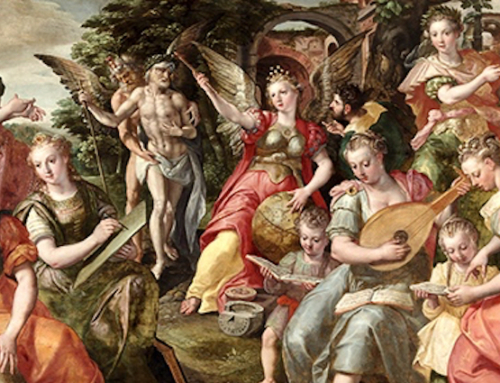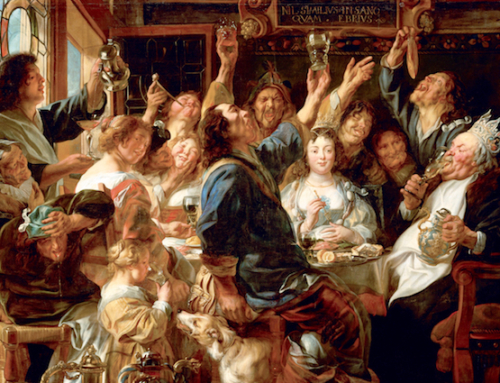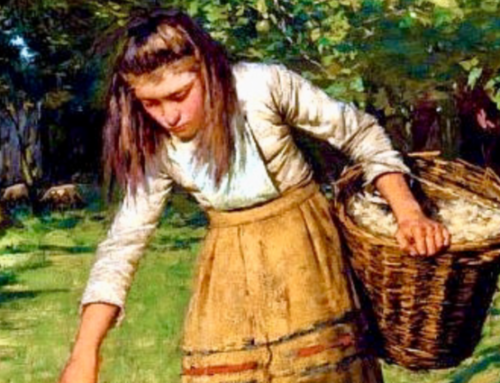 What happens when we enter a world of constant connection—a world in which technology infiltrates nearly every moment of our waking existence? “We all feel the porcupine quill of constant contact, the irritant of ever presence, and long to escape, if only for a moment,” Rabbi David Wolpe writes for TIME Magazine. But Wolpe also believes that, in a sense, this new form of constant connection is just an echo of past forms:
What happens when we enter a world of constant connection—a world in which technology infiltrates nearly every moment of our waking existence? “We all feel the porcupine quill of constant contact, the irritant of ever presence, and long to escape, if only for a moment,” Rabbi David Wolpe writes for TIME Magazine. But Wolpe also believes that, in a sense, this new form of constant connection is just an echo of past forms:
People tired of living in villages, where everyone knew everyone’s business and where there was no privacy or space. So, we built large, anonymous cities with ample rooms and deliberate neglect of others. Finding that such space parched our souls, we began to devise technological ways to bring us closer, from texting to tinder. Now, back in the virtual village, we are too close, and long for the space that we had just two decades ago.
Wolpe is right to note the role that urban disconnect and division has played in driving people apart, and the way in which it’s led to increased technology use. Many Americans live in an extremely atomistic space: whether we commute to jobs far from home, live far from family and friends, rent space in an apartment complex full of people we don’t know, or go to a mega-church filled with unfamiliar faces—many of us could report feelings of disconnected, loneliness, isolation.
But I think there’s a problem with comparing the closeness of the social media era with the community we might have seen in villages (or small-town communities) past.
First, one must note the obvious fact that real villages/towns are limited in time and space. They are necessarily small, while also being inescapably diverse: they hold people of different ages, interests, vocations, ideas, and values (while it is still worth noting that some communities are not diverse enough, and can fall into the sort of tribalism that is, in fact, deleterious to true community).
The “virtual village” that Wolpe describes, on the other hand, is a mass. It cannot be easily defined, and does not have limits. It is movement-driven and emotionally-oriented, a beast quick to react with passion instead of with reason—and thus, interestingly enough, prone to the same sort of tribalism that is so often condemned in real-world villages. On social media, you can choose and curate a “village” according to ideological or characteristic preference—by unfriending or following, you create the space and listen to the voices that you prefer, those that suit your own virtues and vices. This can lead members of the virtual village to become calloused or ignorant toward issues outside of their sphere of interest.
Second, while real villages/towns are often nosy and gossipy and contentious, the people within them live, work, worship, and rest together. Their lives are inexplicably intertwined, and cannot be turned off or logged off. Thus, people in a real village must learn to forgive, to work through differences, to heal hurts and find societal solutions to real-world dilemmas. The “virtual village,” on the other hand, gives us the opportunity to disconnect whenever we become offended or angry. It enables us to be as nasty, narcissistic, and demeaning as we please—with very few real-world consequences. And this creates a dangerous sort of atmosphere, one that is in fact poisonous to real community.
When we consider the amount of cynicism, anger, envy, and FOMO (fear of missing out) prevalent online, it is no wonder that our souls have become “parched,” as Wolpe puts it. But I don’t think it’s because we are too close—rather, I believe it is because we are slowly learning that communication cannot replace community.
We live in a world that runs on incessant communication. Twitter, Facebook, Tumblr, chatting, FaceTime spill together an endless pooling of words, pictures, audio clips, videos. The Economist reported that people ages 16 to 24 use their smartphones for nearly four hours a day. But the incessant nature of our communication does not necessarily turn dialogue into community rapport. Something more is required to build a real community. Wendell Berry, in a recent interview, told me this:
… Community is not made just by communication. It is a practical circumstance. It is composed of people who have a place in common. But it is made by people’s willingness to be neighbors, good and faithful servants, to one another. It survives by its members’ recognition of their need for one another, if only to keep the small children from getting lost or run over, or to keep their trash out of the streams and roads. My guess is that a healthy community would be indivisible from its own, its local, economy.
You don’t have to agree with Berry wholeheartedly to appreciate his conception of community: it’s more holistic and service-oriented than the “virtual village” described by Wolpe. I think the Internet can complement community—Facebook and Twitter are useful tools in fostering the networking and gathering of individuals—but it cannot replace it. Service, proximity, need: these cannot be cultivated, long-term, over a long distance. Friendship must have limits, like a real town does.
Wolpe does not seem to consider that, while the virtual village does indeed leave us feeling “parched”—at once lonely and overwhelmed by clamor—the real village has a rhythm and cadence of community and rest. While every village is imperfect, it can preserve individual spheres and private spaces. It can complement the individual’s desire to come apart and be alone. The virtual village, on the other hand, will alway clamor for more status updates and pictures, for ever-greater involvement and immersion. It is, as Wolpe says, increasingly difficult to ignore that “tug”—to turn off one’s phone, or iPad, or laptop, and ignore the virtual “village.” It will not leave us alone.
Once again, the Internet isn’t evil. Social media isn’t useless. But if we view it as an end, rather than as a means, we can in fact lose our chance for real community. The presentation of village life that Wolpe presents—always prickly and discomforting, ever too little or too much—may point to the imperfection of our natures, our inability to ever perfectly satiate each other’s need for community. But it is in delving deeper, growing to know each other, and cultivating virtue that we slowly begin to build proper bonds—to understand each other’s needs, both for camaraderie and for privacy. Such knowledge can’t be fostered online: it requires time spent in each other’s company, frank acknowledgement and honest forgiveness. It requires the sort of living together, side-by-side, that a virtual village cannot provide.
Republished with gracious permission of The American Conservative (February 2015).
The Imaginative Conservative applies the principle of appreciation to the discussion of culture and politics—we approach dialogue with magnanimity rather than with mere civility. Will you help us remain a refreshing oasis in the increasingly contentious arena of modern discourse? Please consider donating now.
*Read the TIME Magazine article here.
Editor’s note: The featured image is by Lisa Fotios from Pexels .







Leave A Comment